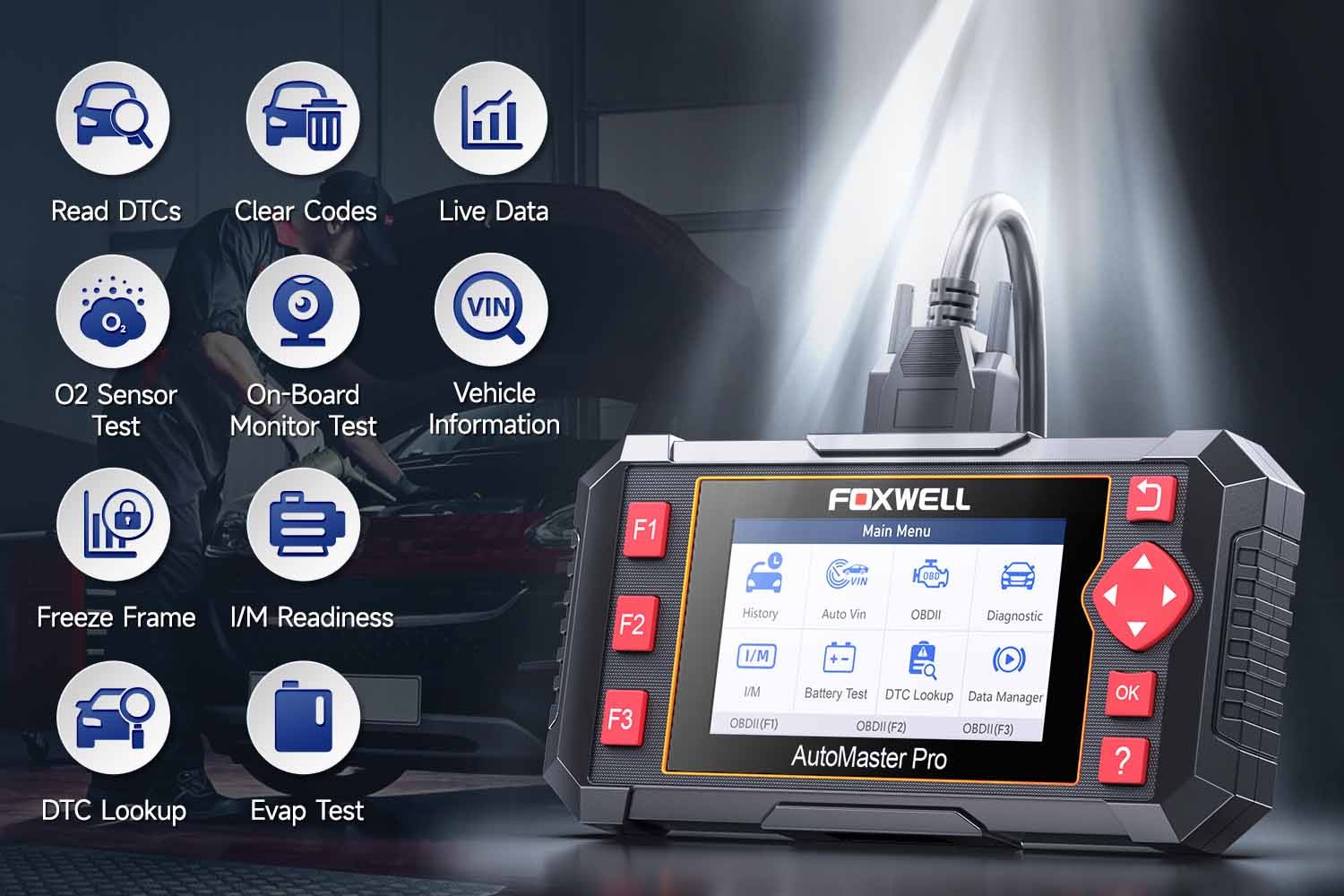Have you ever seen that dreaded check engine light illuminate on your dashboard and felt a surge of panic? It’s a common reaction, and many drivers quickly reach for a simple solution: clearing the code. Perhaps you’ve borrowed an OBD2 scanner or used your own to switch off that warning light, hoping the problem disappears with it.
But does clearing a diagnostic code truly make your car “forget” the issue? Or can a scanner still detect traces of these past problems, even after you’ve hit the reset button?
This article delves into the world of automotive diagnostics to answer the crucial question: Will An Obd2 Scanner Read Cleared Codes? We’ll explore what actually happens when you clear codes, the different types of scanners and their capabilities, and why understanding your car’s diagnostic history is vital for its long-term health and your peace of mind.
Can Diagnostic Scanners Detect Cleared Codes? The Short Answer
The simple answer is: it depends on the scanner and what you mean by “detect.” Clearing a diagnostic code using a standard OBD2 scanner will indeed turn off the check engine light and remove the active trouble code. In this sense, a basic OBD2 scanner will show “no codes found” after a successful clear.
However, it’s crucial to understand that clearing a code doesn’t necessarily erase all traces of the issue from your car’s computer system. Think of it like deleting a file on your computer – it might be removed from immediate view, but the data often remains somewhere on the hard drive until overwritten. Similarly, your car’s onboard computer, or Engine Control Module (ECM), retains certain data even after a code is cleared.
This retained data can be accessed by more advanced diagnostic tools, offering valuable insights into past and intermittent problems. So, while a basic OBD2 scanner might report a clean bill of health after a reset, a deeper dive with the right equipment can reveal a more complete story.
Why Your Car Remembers Even After You Clear Codes
Modern vehicles are sophisticated machines equipped with complex computer systems that constantly monitor various components and functions. When a problem is detected, like a misfire or an emissions issue, the ECM generates a Diagnostic Trouble Code (DTC) and stores it in its memory. This also triggers the check engine light to alert the driver.
When you clear a code, you are essentially instructing the ECM to remove the active DTC and turn off the warning light. However, the system is designed to remember certain events and conditions, even after a reset. This is because:
- For Emission Readiness: Clearing codes also resets emission readiness monitors. These monitors need to run and complete their tests again to ensure all emission systems are functioning correctly. This is important for passing emissions tests.
- For Diagnostic History: Retaining some data, even after a code clear, provides a historical record that can be invaluable for technicians when diagnosing recurring or intermittent issues. It helps them understand patterns and identify the root cause of problems more effectively.
- Non-Volatile Memory: Vehicles use non-volatile memory to store certain types of data. This type of memory retains information even when the power is turned off. This means that even after you clear a code and restart your car, some historical data related to the fault might still be stored.
Different Scanners, Different Capabilities: Accessing Cleared Code Information
The type of OBD2 scanner you use significantly impacts what information you can access, especially concerning cleared codes. Scanners range from basic, entry-level devices to professional-grade, manufacturer-specific tools, each with varying capabilities:
1. Basic OBD-II Scanners:
These are the most common and affordable type of scanners, widely available for personal use. They are designed for basic functions:
- Reading Active Codes: They can read current DTCs that are triggering the check engine light.
- Clearing Codes: They can clear these active codes, turning off the check engine light.
- Reading Freeze Frame Data: They can capture a snapshot of sensor data at the moment a fault code was triggered.
However, basic OBD2 scanners generally do not access historical data or specifically show “cleared codes.” Once you clear a code with a basic scanner, it will typically report “no codes found” if you scan again immediately.
2. Professional Diagnostic Tools:
These are advanced scanners used by professional mechanics and technicians. They offer much more in-depth diagnostic capabilities:
- Accessing Historical Data: Professional tools like the Foxwell NT909 and similar models can often access historical data stored within the ECM, even after codes have been cleared. This may include information about:
- Cleared DTCs: A list of codes that were previously active and then cleared.
- Frequency of Faults: How often a specific fault occurred.
- Conditions When Faults Occurred: Data related to engine temperature, speed, load, etc., when the fault was registered.
- Advanced System Tests: They can perform more complex tests on various vehicle systems.
- Live Data Streaming: They provide real-time data from sensors, allowing for in-depth analysis.
These tools are crucial for diagnosing intermittent problems, understanding the history of issues, and performing thorough vehicle diagnostics.
3. Manufacturer-Specific Scanners:
These are the most specialized type of scanners, designed for specific car brands (e.g., BMW, Ford, Toyota). They offer the deepest level of access to a vehicle’s systems:
- Comprehensive Data Access: They can access virtually all data stored within a vehicle’s computer system, including very detailed historical information and manufacturer-specific codes that generic OBD2 scanners might miss.
- Advanced Programming and Calibration: They can perform complex functions like module programming and system calibrations.
Manufacturer-specific scanners are essential for dealerships and specialized repair shops dealing with particular car brands, providing the most comprehensive diagnostic and repair capabilities.
What Happens After You Clear Diagnostic Codes: Common Scenarios
Clearing a diagnostic code can have various outcomes, and understanding these is important for responsible vehicle ownership:
- Issue Resolved, Light Stayed On: Sometimes, a minor issue, like a loose gas cap, triggers a check engine light. Once you tighten the cap, the problem is resolved. Clearing the code in this scenario is often appropriate. The light should stay off if the fix is successful.
- Underlying Problem Remains: If you clear a code without addressing the root cause of the problem, the check engine light will likely reappear. The underlying issue is still present, and the system will re-detect it and set the code again. This is why simply clearing codes without diagnosis is not a long-term solution.
- Temporary Fix Illusion: Clearing a code can sometimes create a false sense of security. For example, an intermittent misfire might trigger a code, and clearing it might temporarily turn off the light. However, the misfire could return, potentially leading to more significant engine damage over time if left unaddressed.
- Impact on Emission Readiness: As mentioned earlier, clearing codes resets emission readiness monitors. If you take your car for an emissions test immediately after clearing codes, it is likely to fail. The monitors need time to run their tests, which can take several drive cycles, depending on the vehicle and the specific monitors.
Clearing Codes and Emission Testing: Be Aware of Readiness Monitors
Emission testing is a crucial part of vehicle compliance in many regions. Understanding how clearing codes affects emission readiness is essential to avoid failing these tests.
When you clear codes, all emission readiness monitors are reset to an “incomplete” or “not ready” state. These monitors are self-tests that the vehicle’s computer performs to ensure that emission control systems are functioning correctly. Common monitors include:
- Catalyst Monitor: Checks the efficiency of the catalytic converter.
- Oxygen Sensor Monitor: Tests the functionality of oxygen sensors.
- Evaporative System Monitor: Checks for leaks in the evaporative emissions system.
- EGR System Monitor: Tests the Exhaust Gas Recirculation system.
After clearing codes, these monitors need to run and complete their tests to return to a “ready” state. This requires driving the vehicle through specific drive cycles that vary depending on the make and model. If you take your car for an emissions test before the monitors are “ready,” it will likely fail, even if there are no active fault codes present at that moment.
Legal and Ethical Considerations of Clearing Diagnostic Codes
While clearing diagnostic codes can be a convenient function, it’s important to be aware of the legal and ethical implications:
- Selling a Vehicle: In many jurisdictions, it is illegal to sell a vehicle knowing it has underlying problems and concealing them by clearing codes just before a sale or inspection. Buyers have the right to be informed about a vehicle’s history and any known issues. Experienced mechanics and inspectors can often detect evidence of recent code clearing, raising red flags.
- Emissions Tampering: Tampering with emissions control systems or clearing emissions-related codes without addressing the underlying issue can be illegal and carry significant fines in many areas. Emissions systems are in place to protect air quality, and intentionally circumventing them is a serious offense.
- Honesty and Transparency: From an ethical standpoint, it’s always best to be honest and transparent about a vehicle’s condition. Clearing codes should not be used to mask problems or mislead others.
Conclusion: Use Code Clearing Wisely and Understand Your Car
So, will an OBD2 scanner read cleared codes? In a direct sense, a basic scanner won’t show you cleared codes as active faults. However, it’s crucial to remember that clearing codes is not a magic fix. Your car’s computer system retains information, and advanced scanners can often access historical data related to past issues.
Clearing codes can be useful in specific situations, such as after fixing a minor issue or resetting the system after maintenance. However, it should never be used as a substitute for proper diagnosis and repair.
If your check engine light comes on, it’s essential to:
- Identify the Code: Use an OBD2 scanner to read the DTC and understand what system is reporting a problem.
- Diagnose the Root Cause: Don’t just clear the code. Investigate the underlying issue. This might involve further testing, inspection, or professional diagnosis.
- Repair the Problem: Address the root cause of the fault.
- Clear the Code (If Appropriate): After repairing the issue, clearing the code can reset the system and turn off the check engine light.
- Monitor for Recurrence: Keep an eye on your vehicle to ensure the problem doesn’t return.
By understanding how diagnostic codes and scanners work, you can be a more informed car owner, make better decisions about vehicle maintenance, and ensure your car remains reliable and safe on the road. Listen to your vehicle, investigate warning lights, and seek professional help when needed – it’s the best approach for long-term vehicle health and a smoother driving experience.
FAQs
Can I use my phone as a car code reader?
Yes, you can! By using an OBD2 Bluetooth adapter that plugs into your car’s OBD2 port and a compatible app on your smartphone, you can read and clear codes, view live data, and perform other diagnostic functions using your phone.
Can an OBD2 scanner detect misfires?
Absolutely. Most OBD2 scanners are capable of detecting engine misfires. They do this by reading misfire-specific trouble codes, which typically fall within the P0300-P0312 range. P0300 indicates a random misfire, while P0301, P0302, etc., specify misfires in cylinder 1, cylinder 2, and so on.
How can I find the code to my car without a scanner?
While an OBD2 scanner is the most straightforward way, some older vehicles offer methods to retrieve diagnostic codes without a scanner. This often involves turning the ignition key on and off in a specific sequence or using the car’s dashboard display to access diagnostic menus. However, these methods are not universally available and vary greatly depending on the vehicle’s make, model, and year. Consult your owner’s manual for vehicle-specific procedures. For most modern cars, an OBD2 scanner is the most reliable and efficient method.

